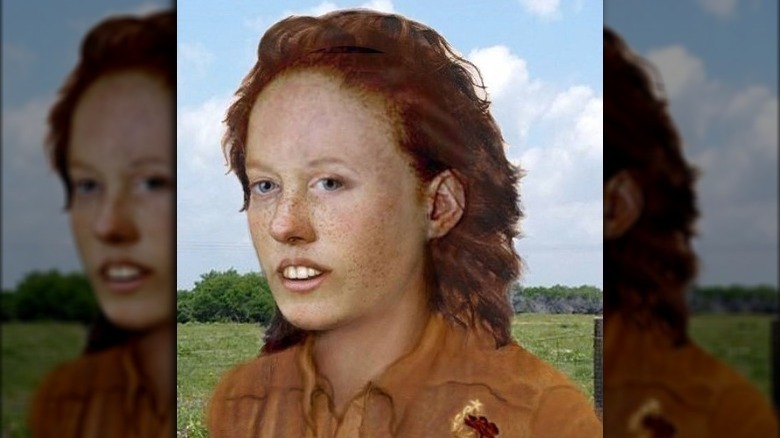How A Murder Victim Was Identified After A Tip From An Amateur Sleuth
On June 1, 1982, 14-year-old Michelle Garvey disappeared from her New London, Connecticut home. It was believed that she had run away, The Day reported, perhaps heading towards North Carolina or New Jersey. One month later, a girl's remains were discovered in a field in Houston, Texas, according to the Associated Press. She had been murdered. However, the connection between the two wouldn't be known until more than three decades later, with help from an unexpected detective.
Polly Penwell is a woman with autism who told Northern Express that her unique ability to see patterns makes her an ideal online sleuth. In 2014, she settled on a method for solving missing persons cases. She would start with a list of unidentified remains and then compare it to a list of people who were still missing. She solved the Michelle Garvey case by looking at two such databases from the National Missing and Unidentified Persons System.
"I ran perimeters in each of those that would bring up somebody," Penwell told Northern Express. "I narrowed the results down to somebody who was just found in Texas. And that was just it. A missing white young girl [from Connecticut], and a found young white girl from Texas. It took me 10 minutes to find her."
Penwell was right, but DNA technology got the credit
Polly Penwell was convinced that the Michelle Garvey who disappeared from Connecticut was the same person as the girl found murdered in a Texas field, according to Northern Express, especially after she saw a photo of Garvey and that of the unidentified remains. So she contacted the Harris County Medical Examiner's office to relay her discovery. Shortly after, the cold case was finally solved. However, Penwell did not receive credit.
Instead, a press release said the connection was finally made because of a DNA match, as MassLive reported. The official story was that the Harris County, Texas Institute of Forensic Science had exhumed Garvey's body in an effort to collect DNA samples, which led to a match through the National Missing and Unidentified Persons System databank.
But Penwell has confirmation that her tip helped, according to Northern Express. She saved an email from Sharon Derrick, a forensic anthropologist with the Harris County Institute of Forensic Science. "You were right on with your suggestion," Derrick wrote.
Penwell said that it hurt not to receive credit for solving the case. "As a human being, I have to admit, I've been a failure my whole life. As far as society is concerned, that's the way people see me," she told Northern Express. "I feel guilty about it, but I do – I wish I would have gotten some validation."

